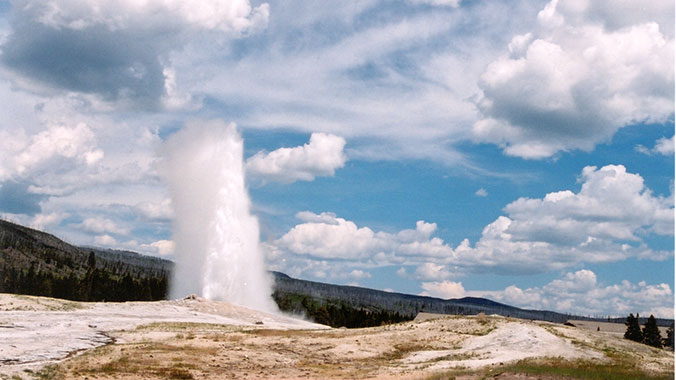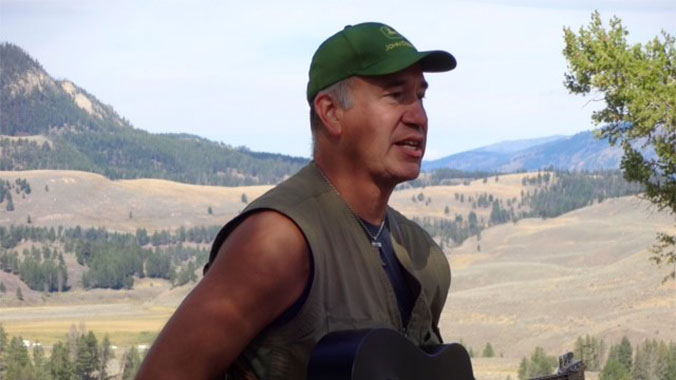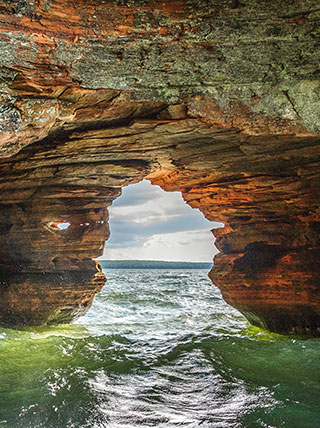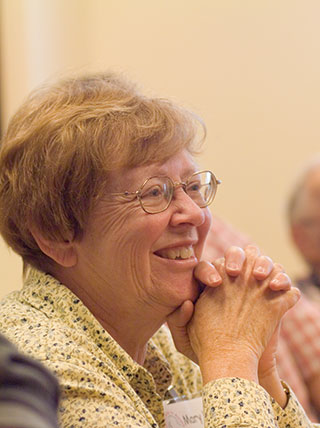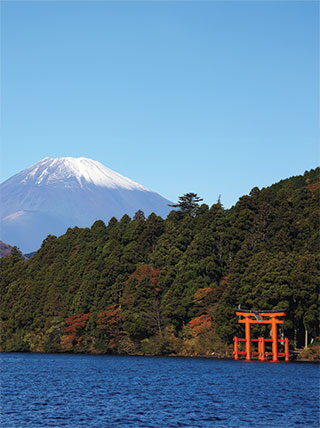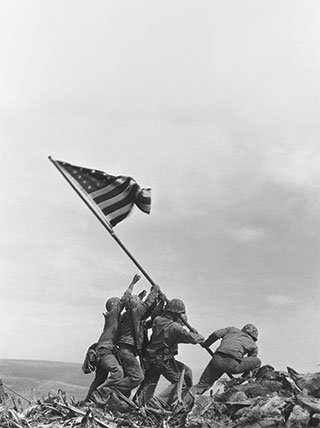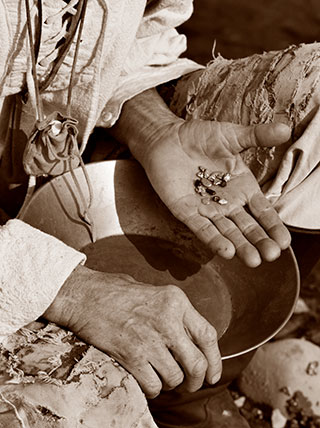
Yellowstone: The Great Caldera
Enroll with Confidence
We want your Road Scholar learning adventure to be something to look forward to—not worry about. Learn more
Protecting the Environment
We offset a portion of the emissions created by your travel. Learn more
At a Glance

What You'll Learn
- Enjoy four full days in Yellowstone exploring pristine rivers, waterfalls, beautiful vistas and wildlife.
- Meet exploration and survey parties and learn about current issues and evolving philosophy.
- Visit the Yellowstone National Park Heritage and Research Center, which houses a collection of 5.3 million items.

Please note: This expert may not be available for every date of this program.



Activity note: Hotel check-in from 3:00 p.m.
Afternoon: Program Registration 4:00 – 5:00 p.m. After you have your room assignment, come to the Road Scholar table to register with the program staff and get your welcome packet containing your up-to-date schedule that reflects any last-minute changes, other important information, and to confirm when and where the Orientation session will take place. If you arrive late, please ask for your packet when you check in.
Dinner: At a conference room in the hotel.
Evening: Orientation. The Group Leader will greet everyone and lead introductions. We will review the up-to-date program schedule, discuss roles and responsibilities, logistics, safety guidelines, emergency procedures, and answer questions. This program will be led by both the Group Leader and an instructor, who is an expert naturalist and will lead the educational portion of the program. Unless specified otherwise, all transportation will be provided via private motorcoach, requiring the ascending/descending of a few steps when getting on/off. Remember to bring your own water bottle. Ice water will be available in coolers on the bus during travel, from which you may fill your water bottle; disposable cups will not be available. Expect to walk an average of 2 miles per day. The Greater Yellowstone area is considered high desert, very dry. At high altitudes you are more susceptible to dehydration and altitude sickness. Periods in the daily schedule designated as “Free time” and “At leisure” offer opportunities to do what you like and make your experience even more meaningful and memorable according to your personal preferences. The Group Leader will be happy to offer suggestions. Program activities, schedules, personnel, and indicated distances or times may change due to local circumstances/conditions. In the event of changes, we will alert you as quickly as possible. Thank you for your understanding. Continue getting to know your fellow Road Scholars, settle in, and get a good night’s rest for the day ahead.
Activity note: Walking about 2 miles total over several moderate walks throughout the day; established trails, asphalt paths, boardwalks. Getting on/off motor coach; driving approx. 120 miles throughout the day; about 4 hours.
Breakfast: At a local restaurant.
Morning: Enjoy an introductory lecture given by our instructor. During our morning class time our instructor will put Yellowstone into perspective as we hit the road and discuss some of the geologic processes that have shaped Yellowstone's landscape through the ages. We’ll consider tectonic plate movement, the Yellowstone hot spot, and how the Park's unique ecosystem and diverse habitats are a direct result of glaciations, as well as tectonic and volcanic activity. We will check out of our hotel, meet our motorcoach, and transfer to Yellowstone Park via the beautiful Gallatin Canyon and West Yellowstone.
Lunch: Sack lunches along the way.
Afternoon: After lunch, we will board our motor coach and continue the day's discovery. Our instructor will offer commentary as we travel along the Madison and Firehole Rivers, and get a taste of the thermal areas that make Yellowstone so special. Breathtaking vistas of seemingly endless countryside roll out. Upon our arrival in West Yellowstone, we will check into the hotel
Dinner: At a local restaurant.
Evening: At leisure.
Activity note: Walking about 2 miles total on several walks throughout the day; pavement, boardwalks, rocky and uneven terrain; Driving approx. 110 miles total; about 3.5 hours, with stops.
Breakfast: At the hotel.
Morning: We will board our motorcoach and continue our expedition toward the mighty Grand Canyon of the Yellowstone. Through our exploration, we will experience the roar of the 109-foot Upper Falls and see the mighty Lower Fall's 308-foot plunge into its Canyon depths. Our instructor will lead our examination of the canyon's geologic story of glaciers, a volcanic eruption, lava flows and huge ice dams as we have a clear view of the pinnacles towering among the canyon walls. As an early explorer wrote, "There are perhaps other canyons longer and deeper than this one, but surely none combining grandeur and immensity with peculiarity of formation and profusion of volcanic or chemical phenomena."
Lunch: Sack lunches in the park.
Afternoon: We'll continue our exploration of the area that includes Hayden Valley. The Hayden valley is a vast open, mostly grassland that sits at close to 8,000 ft in elevation. The slow moving Yellowstone river meanders through the bottom.
Dinner: At a restaurant in Canyon Village.
Evening: We’ll then return to our accommodation and, on our way back, we will have the opportunity to take advantage of the crepuscular hour for some great wildlife viewing opportunities. The remainder of the evening is at leisure.
Activity note: Walking about 2.5 miles miles total on several walks throughout the day. Driving approx. 110 miles total; about 3.5 hours with stops.
Breakfast: At a local restaurant.
Morning: We’ll begin our day’s journey aboard our motorcoach listening to enlightening commentary given by our instructor about the Great Caldera and its underground “plumbing system”. We’ll make various stops throughout the day to see some of Yellowstone National Park’s 10,000 thermal features – hot springs, mudpots and fumaroles – and over 300 geysers. They’re all a reminder of the area’s recent volcanic past, which laid the foundation for the world’s most diverse and intact collection of thermal activity in the world. Our journey will lead us to the Upper, Midway and Lower Geyser Basins, which spans 11 square miles and features one of the most diverse collections of thermal features found in the park. And of course, Old Faithful being the most famous.
Lunch: Sack lunches in the park.
Afternoon: Our exploration will continue as we travel north towards Gardiner, our destination for the evening. Check into the motel upon arrival.
Dinner: At a local restaurant.
Evening: Evening at leisure. Prepare for checkout in the morning.
Activity note: Walking about 1-2 miles total on several walks throughout the day. Getting on/off the motor coach; driving approx. 200 miles; about 4.5 hours with stops.
Breakfast: At the hotel.
Morning: Setting out from the hotel, we’ll journey toward the Lamar Valley, an expansive valley along the Lamar River in Yellowstone’s northern range, which is a wide-open haven for wildlife. Our instructor will offer onboard commentary as we soak in the expanses of open space with possible sightings of bison, elk, waterfowl, coyotes and more. As we drive and during stops along the way, we’ll consider the magnificent ecosystem and how all its aspects intersect to create a tapestry of life not to be found anywhere else in the nation.
Lunch: Sack lunches in the park.
Afternoon: We'll continue our exploration of northern Yellowstone with a stop at Mammoth Hot Springs.We'll exlore the beautiful travertine terraces and also discuss the military's presence in Yellowstone as we see parts of Fort Yellowstone. We'll then set off for Bozeman via the beautiful paradise valley. We'll check in upon arrival at Springhill Suites.
Dinner: At the hotel conference room, we'll enjoy our final dinner.
Evening: We’ll gather for a wrap-up in our meeting room to review what we have learned and seen during our Yellowstone adventure. Be sure to prepare for check-out and departures in the morning.
Activity note: Hotel check-out by 11:00 a.m.
Breakfast: At the hotel.
Morning: We hope you enjoy Road Scholar learning adventures and look forward to having you on rewarding programs in the future. Please join our Facebook page and share photos of your program. Visit us at www.facebook.com/rsadventures. Best wishes for all your journeys!
Recommended For You


